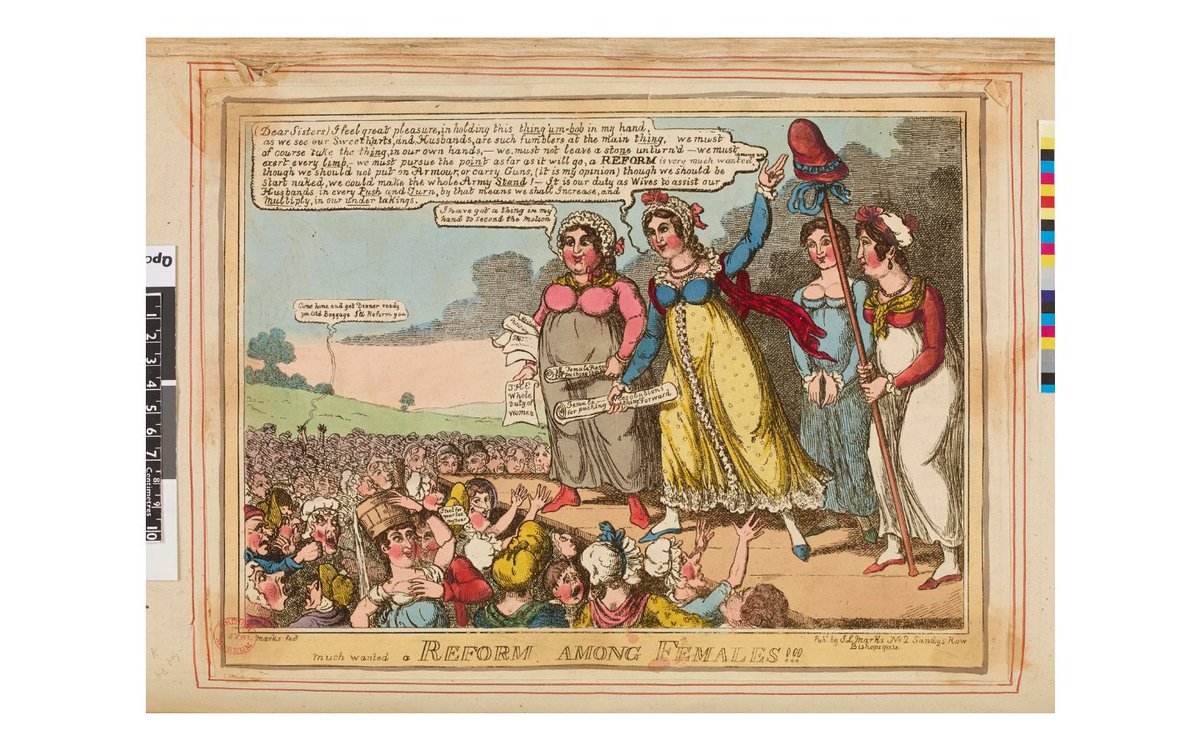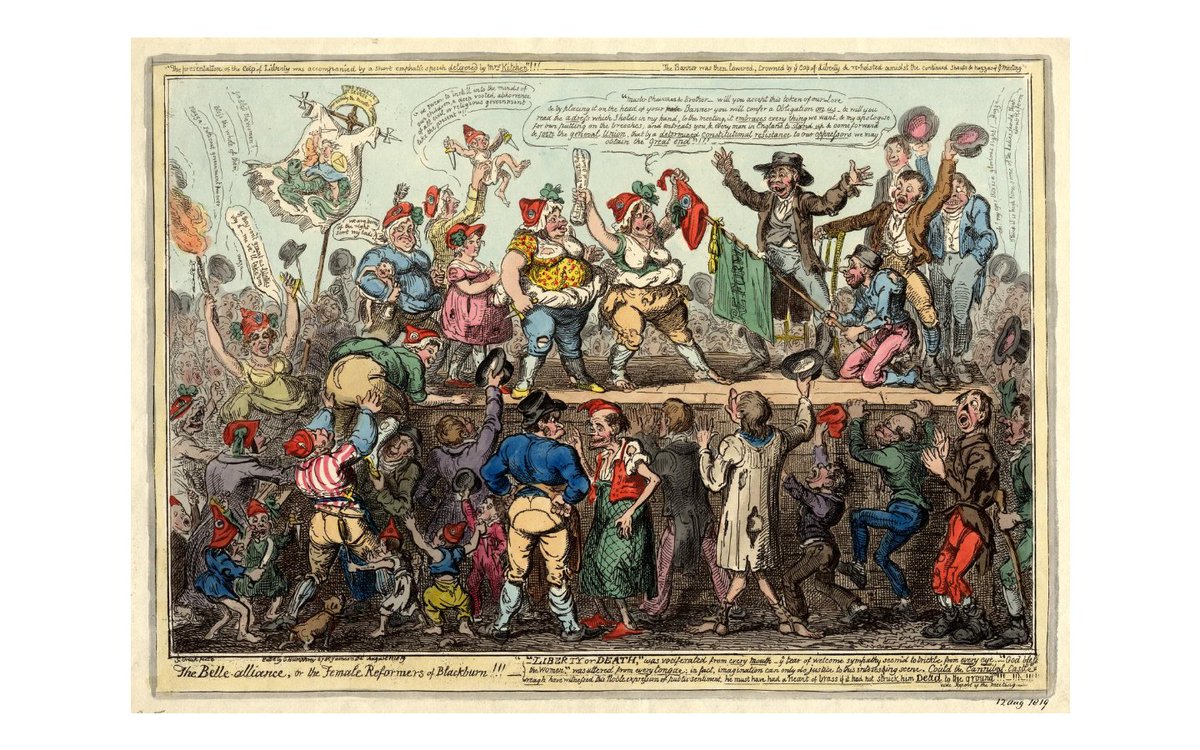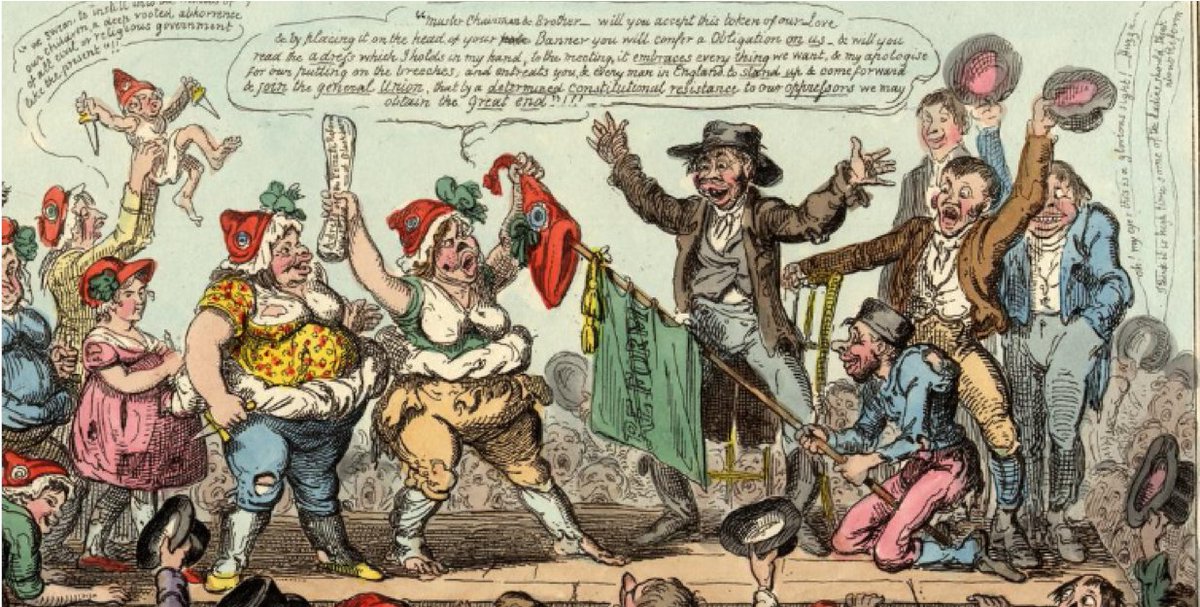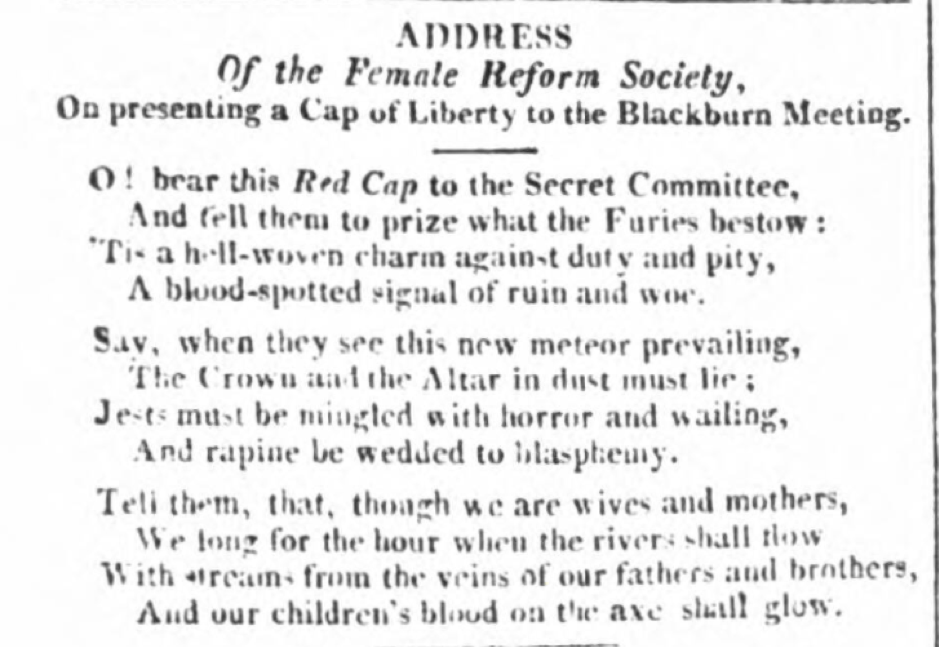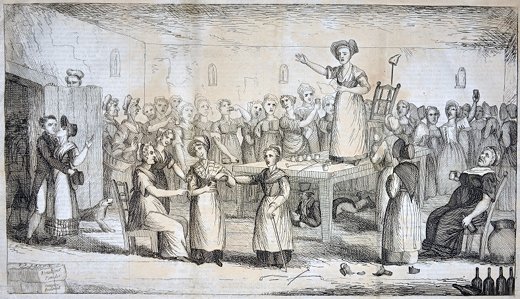& #39;Accept this token of our respect to those brave men... By placing it on the head of your banner, you will confer a lasting obligation on the Female Reformers of Blackburn& #39;. This is my thread for #heritageofprotest on female reformers and liberty caps. (1/18)
The late 1810s were full of radical and political activity. There& #39;s the Spa Fields meetings, the Blanketeers, Pentrich Rising, Cato Street Conspiracy (more on this one tomorrow), and the mass platform. But there was another important event: the emergence of the female reformers
The first public meeting of female reformers happened in Blackburn, Lancashire in July 1819. It was grotesquely caricatured by George Cruikshank. Spot the sexual symbolism, the fatness as insult/women taking up too much space in the political space, and the Jacobin children.
What it does depict though is something super important about female reformers and their radical identity: the liberty cap. This was a potent symbol of freedom that had become entwined with the French Revolution. But FRs used it as a gift. Here we have Alice Kitchen gifting a cap
The gifting didn& #39;t stop at Blackburn. It happened again and again, across the north of England and around Glasgow. FRs at Leigh, Wigan, Leeds, Manchester, Stockport, Paisley, Maccesfield, Halifax, and more all gifted liberty caps to leading radicals and chairmen of meetings.
FRs recognised the power of the object/material culture. Miss Whalley, from Stockport, requested that her society make a cap like & #39;our sisters at Blackburn did at theirs& #39;. In a meeting at Rochdale, FRs gifted a cap and at the end of the meeting, it was processed out music.
So why liberty caps? Well, they are some instances of banners and flags but the majority of the gifts were caps. Liberty was depicted as a woman, the caps were part of the established radical symbolism+tradition, and many FRs came from industrial areas with high female employment
meaning that crafting and making was something they did everyday. Caps also took less material to make. Through being portable, a striking radical symbol, and being connected to Liberty (and Britannia!), they offered a bold proclamation of feminine radicalism.
But they had also chosen a really provocative symbolism. Conservatives viewed it as a revolutionary emblem. Gifting one conjured "the romantic enthusiasm of the commencement of the French Revolution” (Military Register 21/7/1819)
Through entering the public political space and using liberty caps, FRs were attacked and criticised. Again, through being connected to the French Revolution, & #39;we find English women… rivalling in effrontery the infamous Poissards of Paris’ (Sheffield Mercury 24th July 1819)
But also loose sexuality, bad motherhood, abandoning domesticity, wearing the breeches in marriage, failing at femininity, alcohol addiction, and general immorality. We can see lots of these in the prints on FRs, including this depiction of Manchester FRs from Manchester Comet
Despite these attacks, FRs continued to be active across 1819/20, attending, processing, and gifting at mass platform meetings. They formed societies and worked hard in contributing to cause of reform. I think FRs were the main makers of liberty caps in this period too.
Whilst they did not fight for women& #39;s suffrage, FRs are still important political women especially as they were working class. FRs understood how the political system failed everyday people and that people deserved to be represented. This message still rings true.
What about heritage? We don& #39;t see liberty caps half as much today. This symbol, which was so powerful in the 19th century, seems to be have been consigned to the past. It& #39;s been used at various events, esp ones connected to @PeterlooMemoria, but its popularity has dwindled.
FRs are largely unheard of. Recent commemoration of Peterloo has helped raise their profile but political women can often be boiled down to suffragettes. I grew up 10 miles away from Blackburn and did not learn about these Lancashire protestors until I was 21.
Their story and efforts need to part of our radical history. They protested for suffrage, some died for it at Peterloo, and they crafted for reform. 1810s radicalism was not immediately successful, it stalled and spluttered in 1820, but it& #39;s still valuable #heritageofprotest
#heritageofprotest is a complicated creature, how do make sure that all these stories are heard but more importantly remembered? What do we value more? How do we make political narratives? How do we use the past for the political present and future?

 Read on Twitter
Read on Twitter